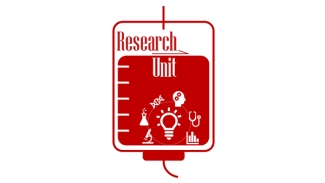A new study suggests more men have hemophilia worldwide than previously thought and highlights the need for improved hemophilia care.
Hemophilia, an inherited blood disorder that affects mostly men, impairs a person’s ability to clot blood. Although it can’t be cured, hemophilia can be treated by injecting a patient with clotting factor concentrates to help restore clotting factors to normal levels. But treatment is expensive and may not be available to all patients, especially in lower-income countries.
An international team that included researchers from the McMaster Centre for Transfusion Research (MCTR), which is supported by Canadian Blood Services, analysed data from national patient registries to estimate hemophilia’s impact on populations worldwide. Their key findings include:
- The first global estimates of the number of newborns with hemophilia, distinguished by the two major types (A or B): approximately 25 cases per 100,000 males for all severities of hemophilia A and 5.0 cases per 100,000 males for all severities of hemophilia B.
- A global estimate of the number of male patients with hemophilia: 1,125,000—almost three times greater than an earlier estimate.
- Estimates of life expectancy for patients with hemophilia in high-income countries: a 30% disadvantage for hemophilia A and a 24% disadvantage for hemophilia B.
But life expectancy is often worse in poor countries. Lead author Dr. Alfonso Iorio says the link between a country’s economic status and life expectancy for patients with hemophilia is dramatic. For example, patients in low-income countries showed an estimated 93% life expectancy disadvantage. “Clearly availability of care is a critical determinant of heath outcomes,” says Dr. Iorio. “By precisely estimating hemophilia’s impact on populations, in terms of the number of people it affects and the degree to which it lowers life expectancy, our study shows there are still large gaps to fill in improving hemophilia care.”
To learn more about the study, read our Research Unit.
Canadian Blood Services – Driving world-class innovation
Through discovery, development and applied research, Canadian Blood Services drives world-class innovation in blood transfusion, cellular therapy and transplantation—bringing clarity and insight to an increasingly complex healthcare future. Our dedicated research team and extended network of partners engage in exploratory and applied research to create new knowledge, inform and enhance best practices, contribute to the development of new services and technologies, and build capacity through training and collaboration. Find out more about our research impact.
The opinions reflected in this post are those of the author and do not necessarily reflect the opinions of Canadian Blood Services nor do they reflect the views of Health Canada or any other funding agency.
Related blog posts
This post was written with contributions from Dr. Miguel Neves, a post-doctoral fellow in Dr. Heyu Ni’s Centre for Innovation lab at St. Michael’s Hospital in Toronto. “Transfusion For All Ages,” the 2017 Canadian Society for Transfusion Medicine (CSTM) annual meeting organized in partnership...
Dr. Hume, a professor at the University of Montreal and former executive medical director for Canadian Blood Services, works six months every year as a pediatric hematologist at the Mulago National Referral Hospital in Uganda.
In this study, Dr. William Sheffield and Craig Jenkins from the Centre for Innovation tested levels and activities of important plasma factors for coagulation in recovered plasma. They found that the way in which plasma is manufactured from whole blood impacts the composition of recovered plasma.


